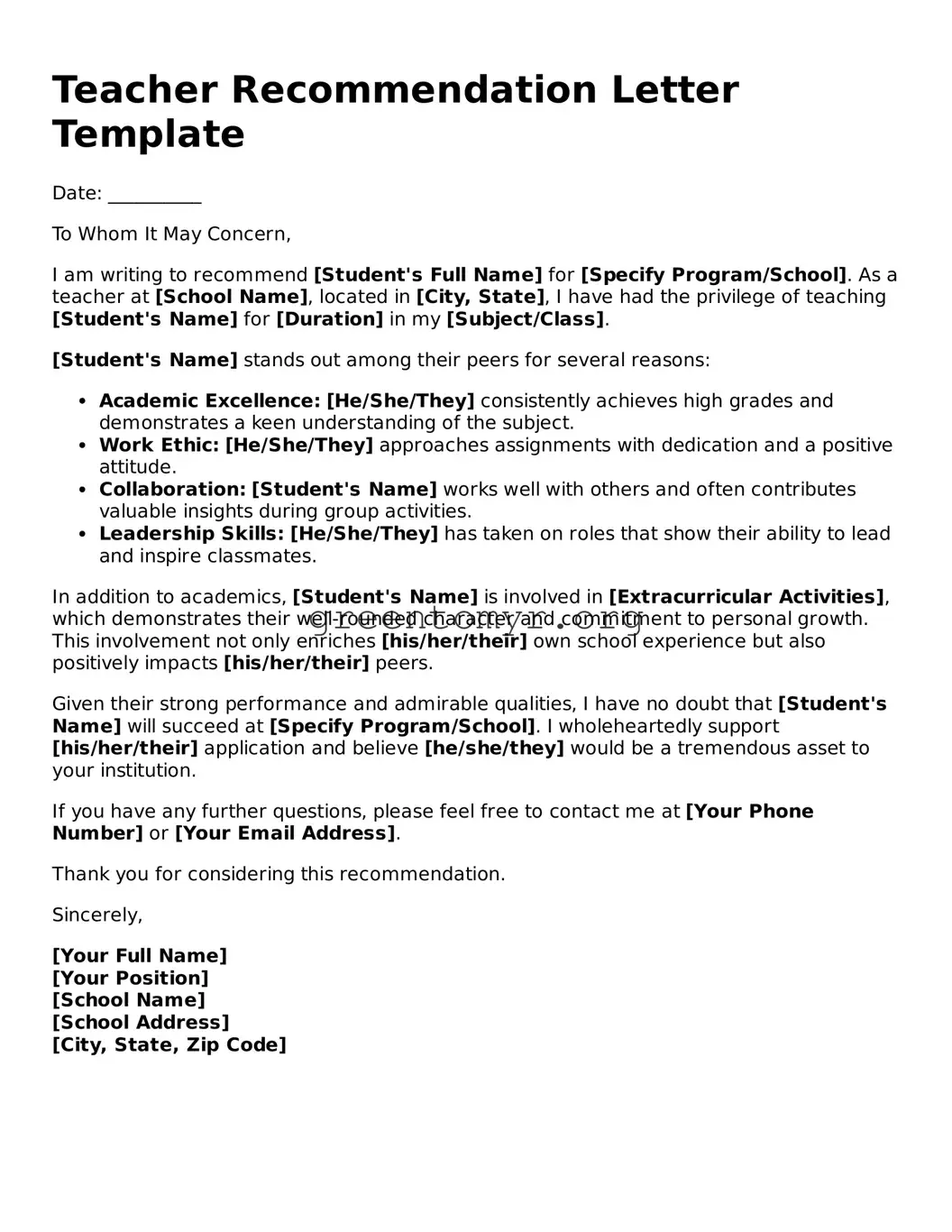Teacher Recommendation Letter Template
Date: __________
To Whom It May Concern,
I am writing to recommend [Student's Full Name] for [Specify Program/School]. As a teacher at [School Name], located in [City, State], I have had the privilege of teaching [Student's Name] for [Duration] in my [Subject/Class].
[Student's Name] stands out among their peers for several reasons:
- Academic Excellence: [He/She/They] consistently achieves high grades and demonstrates a keen understanding of the subject.
- Work Ethic: [He/She/They] approaches assignments with dedication and a positive attitude.
- Collaboration: [Student's Name] works well with others and often contributes valuable insights during group activities.
- Leadership Skills: [He/She/They] has taken on roles that show their ability to lead and inspire classmates.
In addition to academics, [Student's Name] is involved in [Extracurricular Activities], which demonstrates their well-rounded character and commitment to personal growth. This involvement not only enriches [his/her/their] own school experience but also positively impacts [his/her/their] peers.
Given their strong performance and admirable qualities, I have no doubt that [Student's Name] will succeed at [Specify Program/School]. I wholeheartedly support [his/her/their] application and believe [he/she/they] would be a tremendous asset to your institution.
If you have any further questions, please feel free to contact me at [Your Phone Number] or [Your Email Address].
Thank you for considering this recommendation.
Sincerely,
[Your Full Name]
[Your Position]
[School Name]
[School Address]
[City, State, Zip Code]
